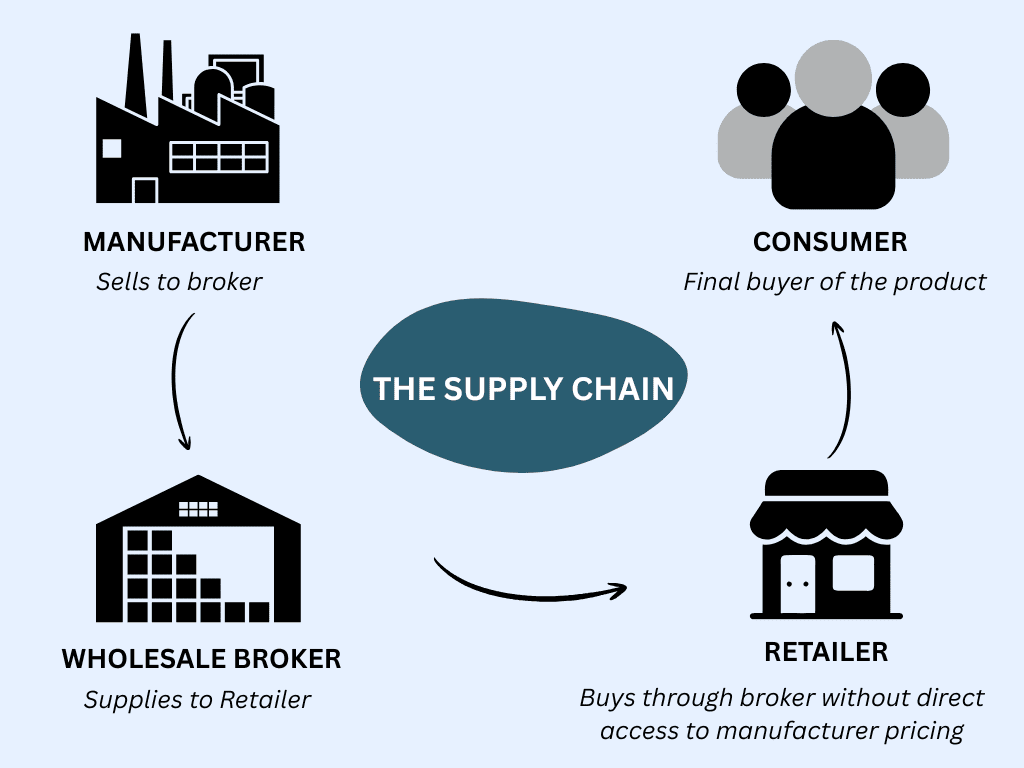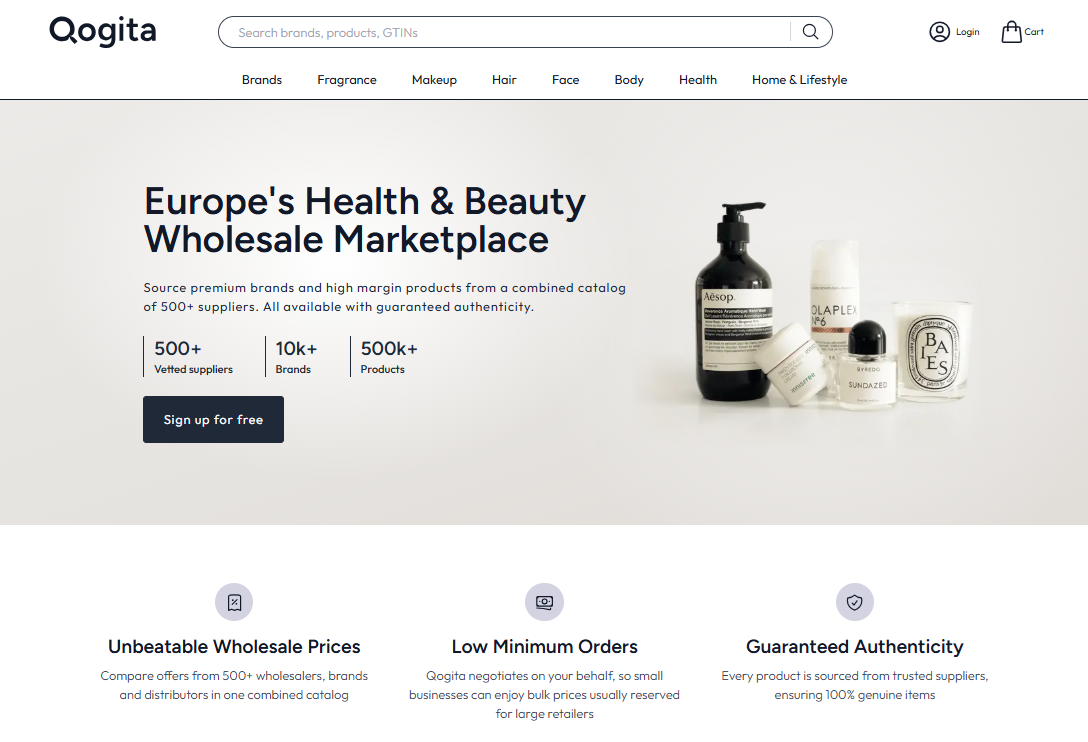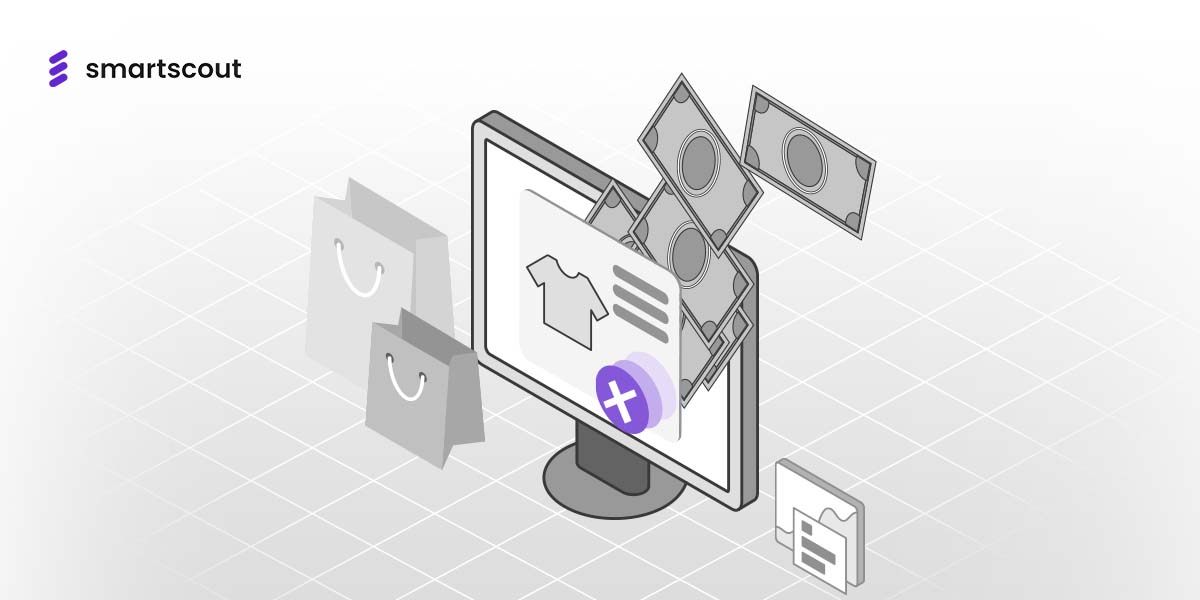Wholesale buying was once a slow-moving process hidden behind closed doors. You called a broker, paid their fee, and rarely knew the real price. But not anymore.
The business world is now telling an exciting story. One where how easily a retailer can buy stock matters as much as the quality of the product itself. Companies now buy on speed and information, not connections.
New facts show how big this change is. The global B2B online market is expected to reach a massive $62.2 trillion by 2030, with almost 50% of all B2B money now spent on the internet.
The clear winner in this change is the B2B Marketplace. These websites are replacing the slow, costly wholesale broker. They offer a direct, open, and easy way to buy, which is a must-have for modern online sellers to grow their business on big sites like Amazon.
The Traditional Role and Drawbacks of the Wholesale Broker
The traditional broker sits squarely between the Seller (the brand or manufacturer) and the Buyer (the retailer or reseller), especially the Amazon FBA seller.

Their primary value is their proprietary relationship with the supplier and their control over essential information. They profit by leveraging information asymmetry: the brand doesn't know the exact end-market demand, and the retailer doesn't know the manufacturer's true factory price. This knowledge gap is the broker's margin.
The traditional wholesale broker model is full of challenges for both the buyers and the sellers.
Challenges for Buyers (Retailers/Resellers)
For the retailer attempting to scale a modern eCommerce business, dealing with traditional brokers introduces crippling inefficiencies:
Hidden Costs & Eroded Margins
The broker’s substantial commission is not a transparent fee; it's baked into the Cost of Goods Sold (COGS).
This opaque layer of cost immediately inflates the purchase price, cutting directly into the retailer's profit margin — the very thing they need to succeed on price-competitive platforms like Amazon.
High Barriers to Entry
Brokers exist to move high volume. They enforce restrictive contracts and demand prohibitive Minimum Order Quantities (MOVs), typically $€10,000 or more.
This prevents new or scaling sellers from testing product lines, forcing them into massive upfront capital commitments that dramatically increase inventory risk.
Operational Friction
The process is entirely manual and cumbersome. Sourcing inventory means juggling multiple relationships across different brokers, each requiring phone calls, emails, and manual stock checking via constant file exchange. This administrative overload steals time that should be spent on marketing, strategy, and business growth.
Challenges for Sellers (Brands/Manufacturers)
The manufacturer benefits from guaranteed sales volume, but pays a very steep price in both revenue and strategic data:
Lack of Control & Data
When a brand routes inventory through a broker, they lose all visibility into the final customer: the retailer. This means losing data on actual market demand, buying trends, and geographical hot spots.
They are blind to their own market, making future planning and product development purely speculative.
High Acquisition Cost
The substantial commission (often 10% to 20%) is a heavy price for what is essentially low-risk work by the broker. The broker doesn't take on inventory risk, manage production, or build brand equity. They merely facilitate the introduction, yet capture an outsized share of the revenue.
It's a very costly partnership that limits the brand’s ability to invest in product or marketing.
How B2B Marketplaces Are Changing the Game
The shift from the broker's phone calls and spreadsheets to a B2B marketplace is more than just an upgrade, it's the end of an era. The core disruption is simple: we are replacing a human gatekeeper with a digital system built for scale and transparency.
B2B Marketplaces streamline the complicated, manual process of wholesale (including price haggling, stock checking, and customs paperwork) into just a few clicks on a dashboard. This digitization removes the broker's ability to profit from what you don't know, making the entire supply chain efficient and open.
1. Price and Inventory Transparency
Marketplaces instantly tear down the walls of information asymmetry, which was the broker's lifeblood.
Instant Comparison, Better Price
Instead of calling three different people to get three hidden quotes, you can log in and see hundreds of suppliers for a product side-by-side. This open competition ensures you're getting the best possible price. For example, B2B marketplaces display Dynamic Pricing (prices that instantly adjust based on demand), which is impossible in the slow, static world of the broker.
Live Stock = Zero Guesswork
In the past, you'd wait for a broker to email you a stock-list file that was already hours or days old. Now, successful platforms provide real-time inventory data. This lets you see the exact quantity a supplier has right now.
For a fast-moving Amazon seller, this is gold: it means you can instantly confirm a purchase to match a sales spike, preventing the costly Out-of-Stock (OOS) situation.
2. Horizontal & Vertical Market Expansion
B2B marketplaces are conquering the wholesale space using two distinct strategies: the broad and the deep.
The first is horizontal expansion, which creates a digital department store for businesses. These platforms sell a vast range of products across many industries. They facilitate global eProcurement, handling the complexities of buying many items from many countries.
A classic example is Alibaba, which connects millions of buyers and suppliers globally.
The second is verticalizing marketplaces, focusing on a single, specific niche. They aim to be the absolute best source for one industry. This focus allows them to offer deep expertise and specialised compliance solutions.
The trend toward specialisation is accelerating, as Statista reports a significant rise in these focused platforms.
Case in Point: The Qogita Model

Qogita is a prime example of this hyper-vertical success. As Europe's Health & Beauty Wholesale Marketplace, Qogita provides a single, controlled system for a complex sector. It connects European retailers with a network of verified global suppliers.
The platform manages the entire procurement chain, automating complicated cross-border logistics and ensuring product authenticity. Crucially, Qogita's algorithmic pricing helps sellers on platforms like Amazon access better, more stable margins.
This model provides highly reliable stock, minimising supply chain risk for high-volume resellers. You can learn more about their model at Qogita's Homepage.
The Marketplace Advantage for Amazon and eCommerce Sellers
The B2B marketplace is more than a broker replacement. It is a strategic survival tool for online retailers. For Amazon FBA sellers, this shift is absolutely critical as B2B marketplaces provide the speed and control needed for today's market.
Adapting to Modern Buyer Behavior and Expectations
The new generation of B2B buyers sets the standard based on their daily B2C experience. Marketplaces meet this demand; traditional brokers do not.
- The B2C-Like Experience: Procurement must now be fast, intuitive, and self-service. Data shows that 90% of B2B buyers expect the same user experience as B2C. They want rich product information, quick checkout, and easy order management, all without needing to talk to a salesperson. The B2B marketplace model is engineered to deliver this self-service efficiency.
- The Digital Majority: This push is driven by demographics. Millennials and Gen Z — most of whom grew up with the internet — now comprise the majority of B2B buyers, at 71%. Their demand for a digital-first, transparent process makes the legacy broker model strategically obsolete for any brand aiming to capture future market share.
Risk Mitigation and Scalability
Successful eCommerce scaling is defined by low risk and agile capital deployment. Wholesale marketplaces directly remove the financial barriers and operational headaches imposed by the old model.
- Lowering the Barrier to Entry (MOVs): Brokers demand restrictive contracts and large MOVs. These Minimum Order Values often exceed €10K so it locks out most scaling sellers. Wholesale marketplaces like Qogita counter this by aggregating demand. They offer low thresholds so that retailers can diversify inventory with low capital risk.
- Protection Built-In (Logistics): Cross-border sourcing is operationally complex. Wholesale marketplaces act as a powerful shield by handling customs and compliance issues. They streamline cross-border logistics and handle all claims quickly. This dramatically reduces the seller's administrative work.
- Direct Benefit: Supplier Diversification: By aggregating an extensive, verified pool of brands and suppliers, the wholesale marketplace provides a built-in safety net. This diversification minimises the risk of being dependent on a single supplier who might face production or quality issues. Access to multiple options means the retailer can always maintain supply consistency.
The Future is Direct
The era of the wholesale broker is quickly ending. Built on opacity and high friction, the traditional wholesale model cannot compete. It loses to the speed, data, and direct access B2B marketplaces provide to modern retailers.
B2B wholesale marketplaces empower sellers by collapsing the supply chain. They transform an outdated manual process into a digital competitive advantage.
For Amazon FBA and eCommerce sellers, integrating this modern, digital model is the only way to future-proof their operations. The path to profitability is now direct.










